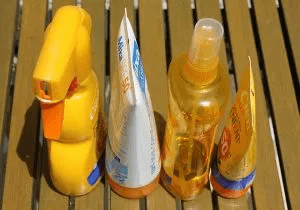Dermatologists want to increase the quality of your life. Their goal is not to completely take away your enjoyable outdoor activities in order to protect your skin. In fact, complete sun avoidance is near impossible, especially in our state. Therefore, the regular use of sunscreens is a practical compromise.
Routine use of sunscreen will significantly reduce your risk of developing skin cancers of all kinds including basal cell carcinomas, squamous cell carcinomas and melanomas. Additionally, another simple reason to use sunscreens is to prevent the agony and sting of a sunburn! No one deserves to feel the discomfort of sunburned skin, especially since it’s so easy to prevent.




